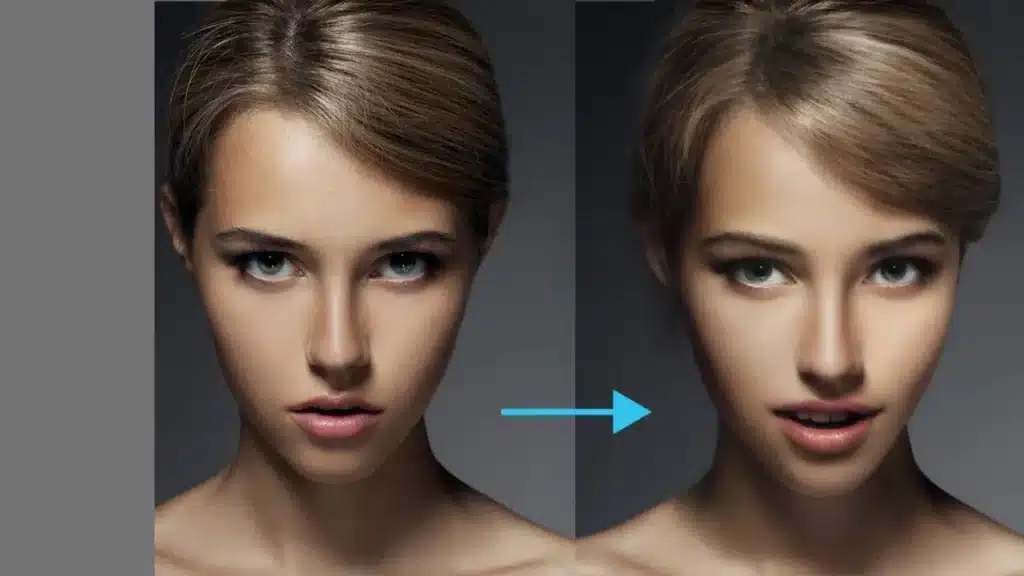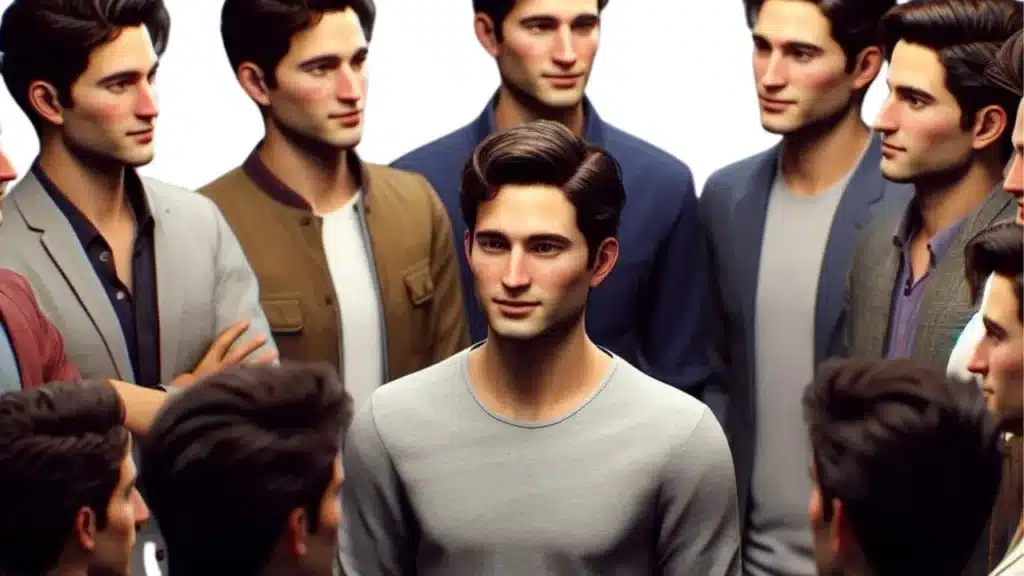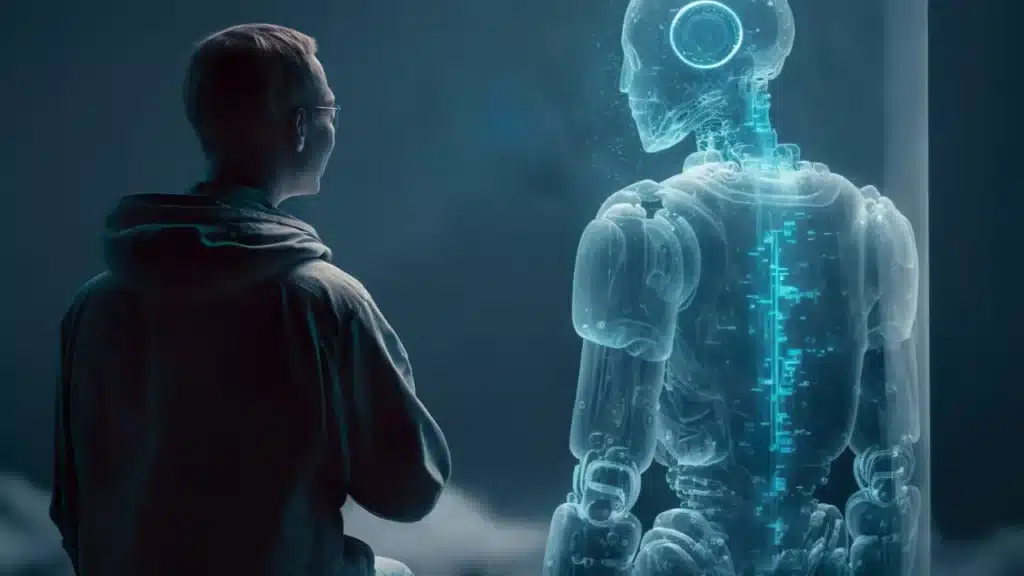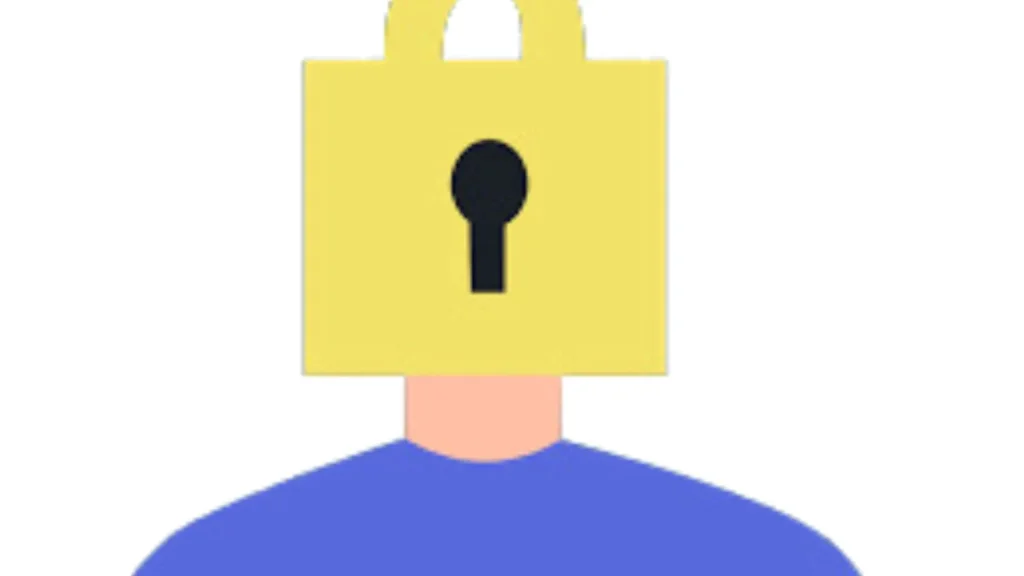Do you remember Lensa AI?
Thanks to a popular AI photo app in December 2022, people gorgeous photos in surreal situations began to appear on social media feeds.
While it was enjoyable to create such images, what if your likeness was used without your consent?
Given the number of people who have used face-scanning services and the lack of laws governing what is and is not acceptable when it comes to owning your likeness, it is a genuine possibility.
Welcome to the world of artificial intelligence-generated Doppelgänger AI, where it’s possible that you are aware of your digital twin’s existence within the extensive internet networks.
When your face may be copied without your permission, what does that mean for your personal identity in the context of doppelgängers AI?
And what about the blurring divide between the genuine and the manufactured?
To avoid AI detection, use Undetectable AI. It can do it in a single click.
How Faces Created by AI Have Changed?

Significant advances in machine learning, with the introduction of Generative Adversarial Networks (GANs) in the mid-2010s, set the stage for AI’s journey to create hyperrealistic faces. GANs, which were first created to produce digital art, pit two neural networks against one another.
One network creates new images, while the other assesses how realistic they are. This technology soon went beyond the realm of art, improving computer vision systems and offering lifelike models for AI education.
With software developer Phillip Wang’s development of the website ThisPersonDoesNotExist, the application of GANs reached a new degree of public participation. Each time the website is refreshed, a brand-new, fictitious yet realistic face is created, demonstrating the inventiveness and strength of GAN technology.
Wang trained his system using over 70,000 high-resolution photographs using a model created by Nvidia A.I. Labs, motivated by a conversation with AI researcher Ian Goodfellow. The outcome is faces that defy expectations of uniqueness and authenticity.
Acts of Hyperrealism

Modern AI-generated faces are designed not just to amaze but to be used in things such as marketing and advertising imagery. Studies have shown that these faces are even realistic than real human faces. Not just do they have a realistic appearance, but they can be produced quick and for nothing.
These virtual entities provide a useful substitute for human models. An illustration of AI effectiveness in the business world is Aitana Lopez, an Instagram model with over 311,000 followers who was created solely through AI.
Designed by Barcelona-based design firm The Clueless, Lopez functions as an influencer who engages with followers and advocates for genuine goods.
The organization claimed to have invented Lopez due to the character’s dependability and effectiveness, which lowers the expenses and administrative difficulties associated with using human models.
The Occurrence of Doppelgänger AI

The development of AI-generated faces has demonstrated that the technology’s capabilities have skyrocketed, using advanced algorithms to create lifelike digital figures. This shift in focus from traditional digital art to lifelike, interactive models demonstrates a major advancement in artificial intelligence technology.
When we delve deeper, we come across a phenomenon known as doppelgängers AI, which combines the surreal with the commonplace. The term doppelgänger refers to the idea of someone who resembles you but is unrelated.
The German term double walker refers to ghost doubles, who were thought to be foreboding harbingers who would portend a person’s misfortune or death. This antiquated idea has changed technologically in the modern day.
Artificial intelligence is being used to construct digital likenesses of real individuals, for a separate online life. AI has been used in the entertainment sector, for example, to digitally recreate actors who have passed away for motion pictures, bringing nostalgic figures back to life.
One famous example is the employment of artificial intelligence and computer generated imagery to replicate Peter Cushing’s Grand Moff Tarkin appearance in Star Wars: Rogue One, even though the actor passed away in 1994.
We Are Providing Our Digital Selves to AI

Applications such as Lensa AI have established it commonplace to transform regular selfies into stylized photos evocative of fantastical worlds. These apps recreate looks in a range of creative ways because they use advanced artificial intelligence algorithms that have been trained on enormous datasets of human traits and artistic styles.
Since then, this initial infatuation has evolved into practical uses. AI now assists us in selecting professional photos; it creates the LinkedIn headshot, customizes resumes, and even creates customized video content for branding.
What started out as a lighthearted experiment with online personas has developed into a tool for professional and personal self-presentation. AI clones are starting to appear in customer support.
Businesses are using AI-driven digital agents to engage with customers in a personalized and interesting way by mimicking the voices and facial expressions of human customer service professionals.
We can produce deepfakes with the aid of the same technology. These convincing and realistic AI-generated pictures, movies, and audio snippets have the potential to misrepresent anyone in comprised situations.
By sharing voice clips, uploading videos, and uploading selfies, people are feeding digital footprints into an AI that never stops learning. photographs are kept and go through a transformation when people submit them to social media or straight into AI systems.
This transformation changes the photographs from random snapshots into useful information for AI training. This is how the procedure operates:
- AI learning starts with the digital files people upload.
- After that, these photos are classified, labeled, and remain anonymous in order to get them ready for the next steps.
- Algorithms such as GANs, which acquire the ability to detect and imitate human traits, are fed labeled photos.
- With this training, AI is able to generate new faces that are distinct from the original ones, whether they are identifiable, lifelike, or creatively modified.
AI might produce doppelgänger AI, or a copy of you with little differences, and you might never be aware of it. Significant ethical questions regarding who owns and uses digital likenesses are brought up by this.
Artificial intelligence is blurring the limits between human autonomy and technological exploitation when it may mimic people faces for political campaigns or marketing without people express approval.
This highlights queries, such as: who owns these AI-generated pictures?
Doppelgängers AI Ethical and Legal Ramifications

Doppelgängers AI provide a number of ethical and legal issues, in relation to ownership and control. These virtual beings, which have a striking resemblance to human beings, traverse an unclear zone between direct duplication and original invention, revealing serious weaknesses in the existing frameworks pertaining to identity rights.
Uncertainties in Law
AI presents new legal challenges that are beyond the capabilities of the current legal systems. For instance, major features of AI-generated content are untested in courts due to the United States’ dependence on outdated copyright laws.
This scenario suggests that society needs new legal precedents regarding copyright in the era of AI, mirroring the earliest legal issues faced with the birth of AI art. Consider the lawsuit that Scarlett Johansson filed against Lisa AI: 90s Yearbook & Avatar, an AI software, alleging that the business used her likeness without consent in its promotion.
The app produced an advertisement that gave the impression that Johansson approved of the goods, which may have harmed her reputation. The advertising was taken down from internet platforms as a result of Johansson’s legal action, bringing attention to the struggles that celebrities face when their digital likenesses are used without permission.
A piecemeal response to new difficulties is evident in the EU’s AI Act, which, while a step toward regulatory clarity, still lacks precise rules for the ownership of information generated by AI.
Complexities with Copyright
Determining authorship and uniqueness in work produced by AI presents an issue. Since AI uses pre-existing data to create new content, we should ask:
Is the output unique or is it just a copy of the training set?
Although the limits of what is deemed transformative are still up for debate in the legal community, the fair use concept in the United States allows for considerable flexibility in the use of copyrighted material to create transformative works.
A small number of businesses are recognizing these problems and forming alliances so that original artists receive payment for the usage of their creations in training AI models.
Moral Considerations
The ethical ramifications go far beyond the law. The idea of personal identification itself is called into question if an AI is able to produce a doppelganger that replicates a person without that person’s permission. This raises questions about the morality of using this kind of technology and puts freedom, security, and privacy at danger.
An AI-generated film could, for instance, depict someone acting in ways they never did, such going to contentious events or committing crimes. Even in cases when the individual in question was not involved in the events portrayed, this type of misuse can result in serious personal repercussions, stigmatization, or public humiliation.
In extreme circumstances, a digital twin might be used to gain access to digital accounts or secure facilities, which could result in identity theft or illegal access to private data. When it comes to corporate espionage and national security, the consequences are severe.
Hazards Associated with Abuse
The introduction of digital doppelgängers carries a high potential of abuse. The unauthorized use of another person’s digital image for political campaigns or commercials without that person’s agreement violates their right to privacy and crosses moral boundaries.
Severe legal safeguards are required to protect people against fraud and impersonation, in addition to the damage they do to their personal and professional reputations. For instance, there have been numerous concerns expressed over the potential that political figures could use deepfakes to create remarks or acts.
There is concern that these movies might be used to deceive voters or damage the standing of political rivals, as the technology is available and persuasive.
Doppelgänger AI Challenges

The need for practical solutions grows as AI becomes adept at producing digital twins that are identical to actual people.
Can legal systems and personal practices keep up with the rapid advancements in technology?
This is the key question facing us.
Updating Legal Systems
The proliferation of AI-generated likenesses demands that current legal frameworks be reevaluated. This includes classifying and identifying digital identities as unique entities, which can call for the creation of additional rights and safeguards. A bill recognizing the production of a digital twin as a digital birth, for example, might be suggested. This would give people legal ownership rights over any AI-generated image that bears a striking resemblance to them.
The Legislative Process
Prompt and aggressive legislative action is required to control the application of AI in the creation of likenesses. To protect people’s ownership over their digital identities, our laws should define what constitutes improper use of digital photographs. Creating a registry where people can manage and claim AI-generated images of themselves is one strategy.
Ownership and consent
It is fundamental to establish explicit policies about ownership and permission. People should have the right to know and provide permission before their images are used or copied. This entails guaranteeing transparency and control and outlining exactly how user data is being used to build AI algorithms.
Enhancing International Cooperation
Because digital technology and AI are global in nature, solving these problems cannot be limited to a single nation. International cooperation is fundamental to creating thorough laws that safeguard digital identities everywhere.
International Standards
The development and usage of digital likenesses need to be governed by a single set of global rules and laws. In order to safeguard people’s rights everywhere, these standards ought to work toward harmonizing perspectives on digital rights and privacy.
International Legal Systems
The establishment of international legal frameworks that address and punish the unapproved use of digital likenesses should be a top concern. This would assist in preventing organizations from taking advantage of regulatory gaps across several jurisdictions.
How to Safeguard Your Online Persona?

As society works to improve AI-related legal reforms, there are proactive measures you may do right now to protect your online identity:
- Before posting images or personal information online, provide it some thought. AI systems may be trained with any piece of data, including images, to create synthetic likenesses. Restrict sharing to required situations and, whenever possible, use safe and private channels.
- Examine your permissions for internet services and mobile apps on a regular basis. Limit who can access your camera, microphone, and photo library unless it is required. Be cautious of apps that ask for additional information than they require in order to operate.
- To stop AI from exploiting your images to develop digital models, think about employing services that conceal or change your photos. AI algorithms can be negatively impacted by these technologies’ subtle adjustments to image features, which are imperceptible to the human sight.
- Review your web presence on a regular basis. Eliminate obsolete profiles and pointless images from social media, and think about clearing up digital traces that are inactive but may be misused.
- Keep up with changes to digital privacy laws and advocate for legislation that safeguards personal information. Take part in campaigns and sign petitions that demand openness in the use of personal data and laws governing AI-generated content.
- Use free resources to expand your knowledge about AI technology and its consequences for privacy. To increase awareness and assist others in understanding the dangers and safeguards against AI misuse, disseminate this knowledge throughout your community.
- Create Google Alerts for your name, and check the internet for the images to see if they show in places you have not been granted permission to. You can keep an eye on where and how your likeness is used with a range of tools and platforms.
Benefits of Doppelgänger AI

For example, doppelgängers AI have the potential to transform how humans engage with and learn from information. Learning assistants that are customized to each student’s unique learning style and pace have the potential to improve accessibility and effectiveness in education.
These artificial intelligence entities have the ability to alter educational outcomes by simulating several teaching approaches and identifying the effective one for each learner. Artificial intelligence doppelgängers can be used as therapeutic tools for mental health.
They might be designed to offer psychological support, facilitate practice dialogues, or assist people in gaining social skills in a relaxed setting. A responsive AI that is sensitive and empathetic could be a help to people who are struggling with mental health issues or isolation.
Doppelgängers AI could help in professional settings by managing repetitive duties and interactions so that human workers can concentrate on intricate, creative work. This could result in a productive workplace and enable employees to participate deeper in areas of their professions that call for human intelligence and creativity.
Conclusion: Doppelgänger AI
Doppelgängers AI pose serious issues with data control and privacy. The fact that AI is able to reproduce people likenesses with such ease raises a number of ethical concerns that need to be considered and subject to strict control.
But could this technology have any advantages in addition to these drawbacks?
Strong laws and precise guidelines should put in place in order for doppelgängers AI advantages to be realized without compromising moral standards. This framework needs to provide stringent safeguards to preserve people’s data and avoid exploitation, in addition to transparency in the development and usage of doppelgängers AI.
FAQs: Doppelgänger AI
What is Doppelgänger AI?
Doppelgänger AI refers to the use of artificial intelligence technology to create a digital doppelganger or look-alike of a person.
How does Doppelgänger AI work?
Doppelgänger AI works by using AI algorithms to analyze and generate a realistic portrait of a person based on inputs such as photos or prompts.
Can Doppelgänger AI personalize the artwork?
Yes, Doppelgänger AI can personalize the artwork by transforming the generated likeness to match specific features or settings provided by the user.
Is Doppelgänger AI just used for creating digital portraits?
No, Doppelgänger AI can be used to generate artistic creations beyond portraits, including virtual settings and generative art.
Are there any ethical concerns with Doppelgänger AI?
Some ethical concerns with Doppelgänger AI include the possibility of creating deepfakes, the misuse of likeness without consent, and the need to understand and address copyright issues.
Why should Doppelgänger AI creation respects copyright laws?
Your Doppelgänger AI should creation respects copyright laws, use original photos or obtain permission to use images of different people in your AI-generated artwork.
Can Doppelgänger AI provide insights into artistic craft?
Yes, Doppelgänger AI can provide insights into the artistic craft by offering a new way to explore the creativity and essence of creating portraits and artwork through machine learning technology.


